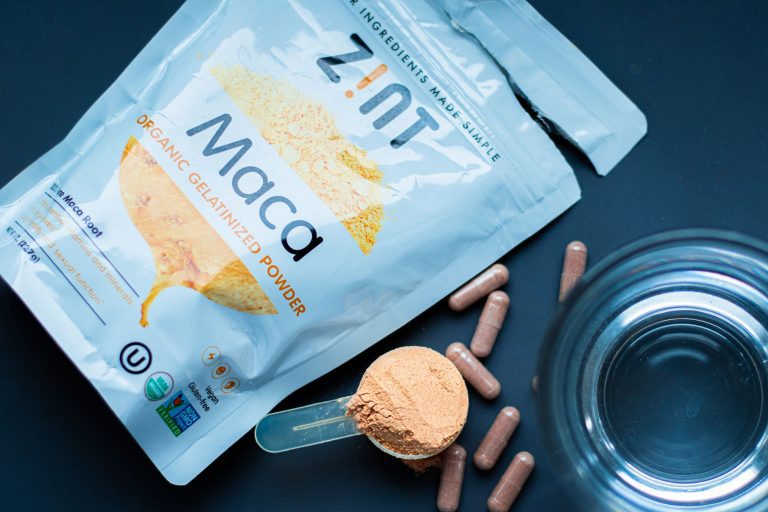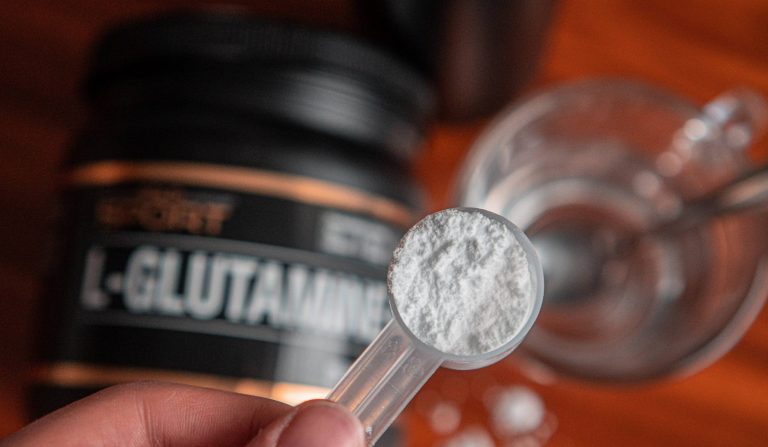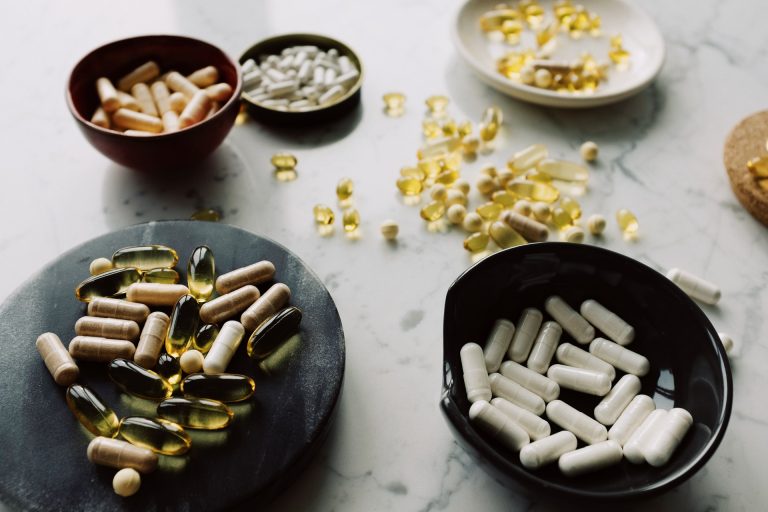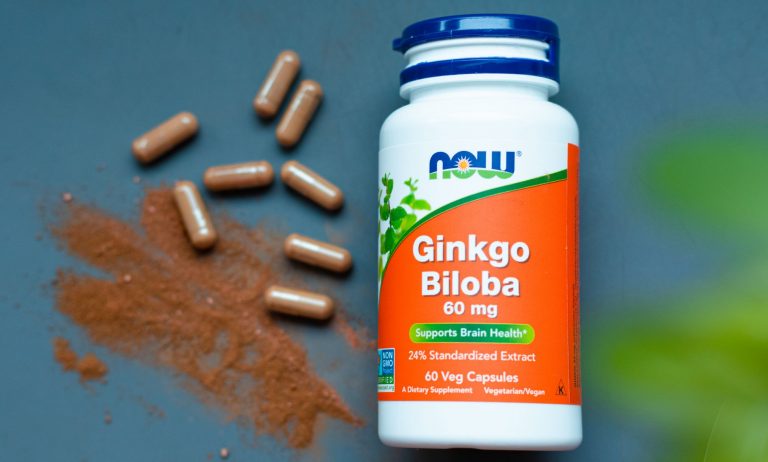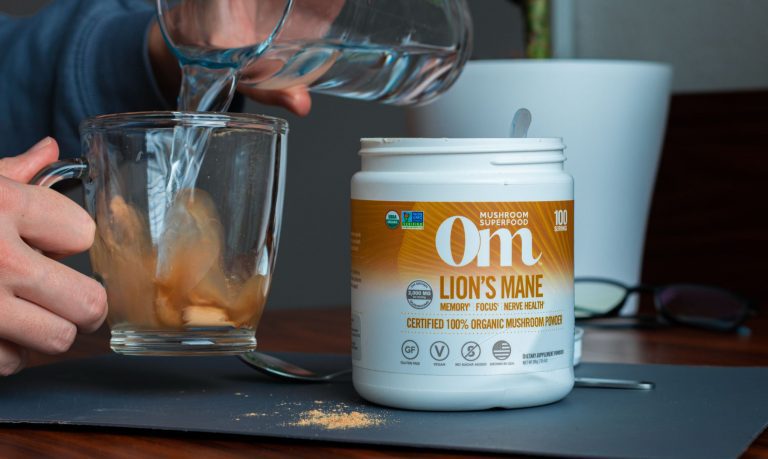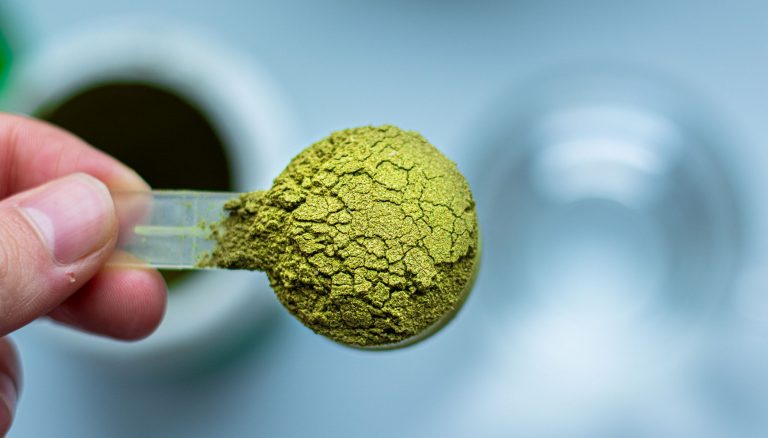The 4 Fat-Soluble Vitamins: A, E, D, K and Why They Are Important
Whether you’re doing the Keto, LCHF, Carnivore, Vegan, or any other diet it is important to understand the importance of the 4 fat-soluble vitamins. We can obtain good amounts by eating high-fat healthy-fat foods like avocado, olive oil, grass-fed butter, and beef, eggs, and seafood.
These vitamins play important roles, and have many benefits, uses, and functions. We’ll highlight the importance of supplementation. As fat-soluble vitamins, these may have longer reserves in the body, high levels may cause toxicity or be excreted. Some are essential and considered to be important to supplement with (Vitamin D, say hi).
The 4 Fat-Soluble Vitamins
Fat-Soluble Vitamins. It’s self-explanatory.
We have vitamins soluble in water, like B vitamins and vitamin C. And then we have another group of vitamins, called the fat-soluble vitamins, which unironically are soluble in fat.
These are the vitamins or vitamin groups:
- Vitamin D
- Vitamin A
- Vitamin E
- Vitamin K
Importance, Roles, Benefits
Fat-soluble vitamins play a very important role in growth, differentiation, and reproductive health. They can support the immune system; help create white blood cells and fight illness and infections. (1)
Some Fat-soluble vitamins like A (lower levels), and vitamin E are potent antioxidants. This means they can reduce inflammation, fight oxidative stress and neutralize free radicals. To translate it into plain English, they help you age slower and be more resistant.(2) (3) (4)
Fatty vitamins are also important for nervous system development and play a major role in neural health, cognitive function, electric impulse transmission, and hormone & neurotransmitter balance, and may exert neuroprotective properties, slowing down brain aging and neurodegeneration. (5)
Absorption and Supplementation
One of the most important things when considering supplementation with fat-soluble vitamins is to enhance absorption.
Logically, if supplementing your FS vitamins, you’d want to do it along with a meal high in fat. This is to improve the absorption of these vitamins because they’re soluble in fat.
Nature took care of this, placing your fat-soluble vitamins in high-fat foods, to allow for better absorption. So if you’re getting all the FS vitamins from food, you’re all set.
Food Sources
Some of the highest fat-soluble vitamin food sources are healthy fat foods. These include dairy, eggs, milk, yogurt, chicken, and butter. Also, many types of meat and seafood contain good amounts of FS vitamins, like sardines, herring, salmon, beef, liver, etc.
Some of the highest vitamin K concentrations are found in green leafy vegetables, like kale, Brussel sprouts, broccoli, collard greens, etc.
Also, don’t forget your vitamin A, and beta-carotene. Look for a yellow-orange vibe in veggies for this one. We are talking sweet potato, carrots, butternut squash, pumpkin, and cantaloupe.
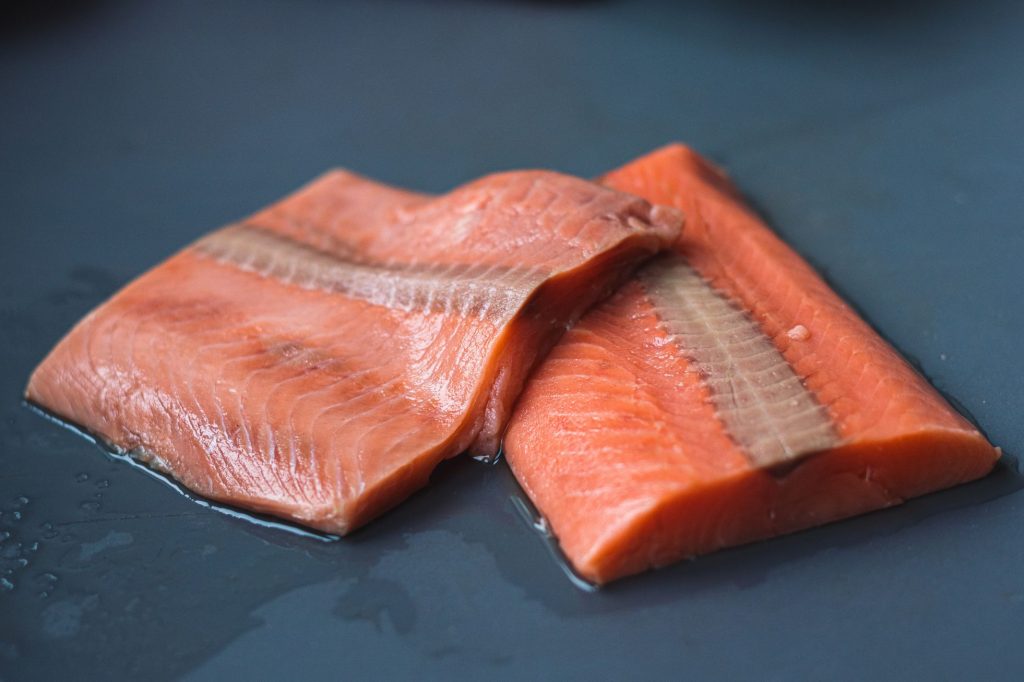
Vitamin D
We can get vitamin D from the sun or food. There is an active and inactive form of vitamin D. The point is to turn inactive D3 into usable vitamin D3 or calciferol, which can support many functions from reproductive and hormonal health to immunity support and muscle growth.
When UV light penetrates in our skin, it photolyzes provitamin D3 to previtamin D3. (6) Then, with the help of two conversions, the vitamin D becomes 25(OH)D3 or calcidiol in the liver (stored), and the second hydroxylation in the kidney makes it a 1,25(OD)2D3 or “the usable” calcitriol, the active form. (7)
Functions
The main functions of vitamin D include:
- Building and maintaining strong bones and teeth (bone anabolic properties)
- Increasing the level and absorption of calcium regulates phosphate levels
- Controls bone metabolism, it can also stimulate osteoclast function, increasing bone resorption (bone-catabolic properties)
- Aids in muscle growth and secretion of testosterone
- Supports immune function (resistance against bacteria, infections)
- Aids in growth, development, and reproductive health (hormones)
Benefits
The vitamin D benefits are similar to its functions.
- Aids in testosterone production, enhances muscle growth and libido
- Supports immune function, by supporting T cells and macrophages
- Supports brain development, cognitive function and may improve mood
- It is crucial for building and maintaining strong bones and teeth
- It may reduce the risk of colorectal cancer
- It plays important role in growth, development, and reproductive health
Deficiency
Vitamin D deficiency is pretty common, that’s why it’s the first supplement on this list. It is D deficiency can cause rickets in children, bone pain or osteomalacia, and increase the risk of osteoporosis, lower libido, testosterone, etc.
People who may be at risk of vitamin D deficiency are especially those who live in cold places, don’t get exposed to the sun, or live mostly indoors. (8)
Also, people with darker skin may have increased melanin function, which acts as a shade preventing vitamin D absorption. Those on a low-fat diet, who don’t eat meat, green leafy vegetables, or dairy fat.
Food Sources
The best source of vitamin D is the sun, don’t neglect getting a good amount of outdoor time (with protected skin of course).
In terms of dietary sources, the highest vitamin D foods are seafood. Things like herring, oysters, salmon, fish, etc. Also, red meat, mushrooms, organ meat, especially the liver are great sources too. Dairy, foods like eggs, fortified milk, yogurt, or hard cheese are great options too. Don’t forget fortified cereal, milk, and cod liver oil too.
Fun Fact
There are multiple vitamin D forms. Vitamin D2 is produced in fungi and plants, while D3 is synthesized in animals and humans. It isn’t just a vitamin, but actually, a hormone involved in many functions.
Supplements
The recommended daily amount or RDA sits at 10 mcg (400 IU) in infants, children, teens, adults, pregnant women 15 mcg (600 IU), and older adults 70 yrs+ 20 mcg (800 IU). (9)
The upper tolerable limit is 4000 IU daily for healthy adults. (10)
Too much vitamin D can cause hypercalcemia, which is elevated calcium. This can cause cardiovascular issues if it starts accumulating in the arteries. Vitamin D toxicity can weaken bones and be detrimental to the kidneys.
summary
Vitamin D plays a vital role in development, bone metabolism, reproductive health, hormone secretion, and immunity. Vitamin D deficiency is common, especially for people living indoors, having darker skin and higher melanin function, living in cold places, etc. Low vitamin D can cause poor growth, osteomalacia, reduce BMD, and lower libido. Exposure to sun and eating foods like seafood, organ meats, dairy (eggs), and fortified cereal can increase vitamin D levels.
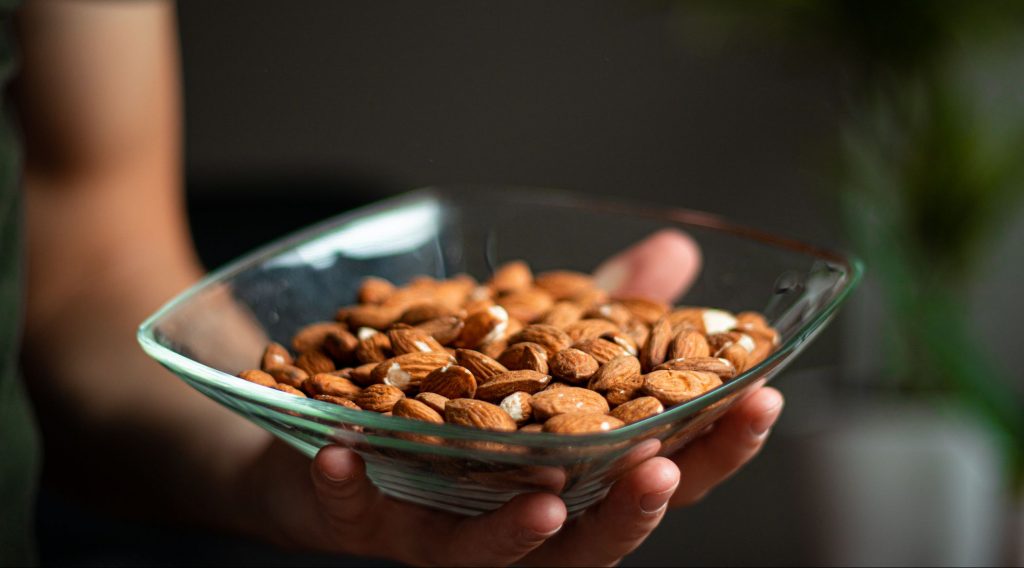
Vitamin E
Vitamin E is actually representing a group of 8 fat-soluble vitamins, 4 tocopherols, and 4 tocotrienols in α (alpha), β (beta), γ (gamma), and δ (delta) forms. Vitamin E is a potent antioxidant that protects from oxidative stress. Vitamin E, according to Wikipedia was discovered back in 1922, isolated in 1935, and synthesized in 1938. Tocopherol’s name comes from a Greek word meaning to bear or birth. It was essential for fertility. (11)
Functions
Vitamin E has various roles in the body, mostly relying on its antioxidant function.
- Fighting oxidative stress, neutralizing free radicals
- Lowering inflammation in the body (anti-aging)
- Helps in the growth of T-cells, Supports immune function
- Maintains Skin cells (membrane) integrity, Offers hydration and skin protection
- Supports reproductive health (the antioxidant in the reproductive system)
- Aids in cognition, brain health, nerve protection
Benefits
- Helps keep a clear, glowing, hydrated skin
- Has potent anti-aging effects on the skin (protects from ROS, UV light)
- May limit or delay neural problems (neuropathies), it plays a role in protecting neural integrity and is essential for neural function
- Aids in defense against bacteria or infection; supports immunity
- Protects the eyes, supports vision (defense against free radicals)
- May improve cardiovascular health by reducing plaque buildup
- May improve cognition, delay neurodegeneration (protects brain membranes)
- May improve fertility, increase sperm life (longevity)
Deficiency
Vitamin E deficiency is thought to be rare in humans. Generally, E is a part of many high-fat foods, but it seems like humans don’t consume enough (close to RDA) of vitamin E.
Vitamin E deficiency is usually linked to problems with fat digestion and can lead to serious side effects like neural problems. Without vitamin E, we aren’t that efficient at fighting oxidative stress.
In rare cases of a genetic mutation for fat metabolism (alpha-TTp), vitamin E absorption can be inhibited. This may lead to uncontrolled movements or ataxia, peripheral neuropathy, retinopathy, or myopathies (neural dysfunction). (12) (13)
Food Sources
The best way to get vitamin E from foods is to increase your intake of Wheat germ oil, which is the most abundant vitamin E source. Then the family of nuts, including peanuts, Brazil nuts, almonds, pine nuts, etc.
Also, in kiwifruit, mango, asparagus, beets, sunflower seeds, sunflower oil, goose meat, and hazelnut oil there’s a good amount of vitamin E too.
Supplements
Vitamin E is usually supplemented in softgels containing alpha-tocopherol. For better absorption, eat it alongside a fat-rich meal.
There are also vitamin E extracts, specifically made for skin, mainly applied topically.
The recommended daily allowance (RDA) for vitamin E, according to the National Institute of Health is: 4 mg for 0-6 months old, 5 mg for 7-12 months old, 6 mg for 1-3 years old, 7 mg for 4-8 years old, 11 mg for 9-12 years old, 15 mg for 14+ yrs (adults) and 19 mg during lactation. (14)
summary
Vitamin E is one of the most potent antioxidants in the body. It protects our skin and nervous system, and supports cardiovascular health and immunity. It helps fight oxidative stress and inflammation and plays important role in reproduction (may improve fertility). Deficiency is rare, usually related to the inability to digest fat, which may lead to neuropathy (neural dysfunction). Wheat germ oil, nuts, and seeds (and their oils) are the richest sources of E. Vitamin E is also applied topically in skin solutions, and if supplemented comes in softgels as alpha-tocopherol.

Vitamin K
Vitamin K is essential for calcium absorption in the bones, and blood clotting function.
There are two forms of vitamin K: vitamin K1 and K2. And oh, there’s K3 too, but it isn’t used for human consumption, so we’ll leave it there.
- Phylloquinone or vitamin K1 – found in green leafy vegetables like spinach, greens, kale, and broccoli.
- Menaquinones or vitamin K2 – found in animal products and fermented foods.
- Animals can convert K1 into MK-4, or K2 form with specific bacteria in their gut flora. (15)
When buying a supplement, you’ll usually see more vitamin K2. There are two forms of K2, the MK-4 we saw, and MK-7 which has a longer half-life.
Functions
The main functions of vitamin K are:
- It is crucial for blood clotting, used to make prothrombin involved in blood clotting
- It is involved in bone-building (transports calcium into bones, with the addition of vitamin D) and helps make osteocalcin, an important protein for building bones.
- Prevents the build-up of calcium in the arteries (calcification) with the production of matrix GLA proteins (MGP)
- It aids in cardiovascular function, supports heart health, and regulates blood calcium levels.
Benefits
You won’t see benefits that would look so impressive, but blood clotting and bone-building are essential for optimal health. This is why vitamin K is so important.
So, it helps create prothrombin which is an important factor for blood clotting. It helps create osteocalcin, important for building strong bones. And it synergistically works with vitamin D, to transport calcium into bone tissue. It also creates matrix GLA protein which can save your arteries from calcification.
Deficiency
With vitamin K deficiency comes bleeding. Bleeding can’t stop because the clotting factors aren’t working well. This can be a hemorrhage both from the outer skin layer or even in the inner part of the body. Vomiting blood or excreting blood can be very strong signs.
Vitamin K as a blood thickener can interact with medications used as blood thinners (warfarin), antibiotics, antacids, or aspirin.
Deficiencies are rare but often seen in people who are heavy alcohol consumers or very malnourished. Also, vitamin K deficiency is possible in people with liver, gallbladder diseases, celiac, or Crohn’s disease.
It can cause osteoporosis and calcification (accumulation of calcium in the arteries).
Food Sources
The best food sources for vitamin K are green leafy vegetables. Eat your spinach, kale, collard greens, broccoli, mustard greens, etc.
Hard cheese, avocado, soybean oil, natto, and beef liver are also packed with vitamin K.
Some research says that vitamin K is poorly absorbed through food. It seems that supplementing K2 may have additional benefits in comparison to K1, and excess vitamin A may interfere with vitamin K absorption.
Supplements
In terms of doses, the RDAs or AI (Adequate intake) for vitamin K for adults (19 yrs+) are 120 mcg for males and 90 mcg for females. (16)
summary
Green leafy vegetables are rich in K1 and fermented and animal foods are rich in K2. Vitamin K plays a vital role in bone metabolism and bone formation (with the help of vitamin D), it is essential for creating prothrombin, an important blood clotting factor. It also prevents calcium build-up in the arteries by creating matrix GLA proteins. It interferes with blood thinners (warfarin), and deficiency can lead to bleeding.

Vitamin A
You’ve probably heard about the importance of vitamin A for vision and as a powerful antioxidant.
Vitamin A is an essential nutrient, which is a group of organic compounds like retinal, retinol, retinoic acid, and provitamin A carotenoids like beta-carotene.
We can find preformed vitamin A in the diet, these are retinol and retinyl esters, but also provitamin A carotenoids, the most common one is beta-carotene. Our bodies can turn beta-carotene into retinol, stored in the liver as lipid droplets.
Functions
Vitamin A, or retinol is essential for vision and improves low-light sensitivity at night. It is a precursor to rhodopsin, an important photopigment found in the retina of our eyes.
So the main function is supporting vision, especially night-time, low-light sensitivity (as retinal is an essential factor in cone and rod cells in the retina).
Vitamin A also supports skin or epithelial cell function (may reduce acne) (17). It is involved in immune system function (and supports immunity),(18) plus is involved in cell growth, division, and reproductive health. (19)
Benefits
For those deficient in vitamin A, some of the benefits of increasing its intake may include:
- Reduced night blindness and better photosensitivity in low-light situations
- Plays a vital role in development, differentiation, and reproduction
- Supports vision, eye health and may reduce age-related decline *in vision
- Supports immune function (helps with white blood cells production)
- May reduce inflammation and fight oxidative stress (as a potent antioxidant)
- May help with skin cell recovery, fight infections, and reduce acne
- Helps build strong bones and reduces the risk of fractures
Deficiency
Vitamin A, like some other fat-soluble vitamins, can be stored. Some people can store vitamin A for a long time, and be able to use it. In such cases, if enough vitamin A is provided in some period (3 months a year per example) the body can use it for extended periods beyond it, and it won’t affect vitamin A levels until the body runs out of it.
Once vitamin A is depleted, levels drop and deficiency is caused. But as with other fat-soluble vitamins, it is important to not overdo vitamin A since it can accumulate. That’s why it may be good to stop supplementing after some period and take some time off unless otherwise advised by your doctor.
Vitamin A deficiency is most common among pregnant women and school children in developing countries. This can cause night blindness, a weak immune system, vision loss or vision-related problems, or acne.
In people with celiac or Crohn’s disease, alcoholism, and cystic fibrosis there is a potential for malabsorption of vitamin A. Besides the mentioned effects, fatigue, infections, dry skin and hair, and infertility might show up. Also, zinc deficiency may reduce vitamin A absorption.
Food Sources
What vitamin A-rich foods are out there? Well, the main ones will be fortified orange juice, fortified cereal, or milk and eggs.
Also, red bell peppers, beef liver, fish oil, tomatoes, and leafy greens contain a generous amount.
Last but not least, my favorite beta-carotene-rich foods. You should aim for yellowish to orange tones. Sweet potato, carrots, pumpkin, butternut squash, etc. You get the point.
Supplements
The absorption of vitamin A as retinol is higher at 75-100% than beta-carotene at 10-30%. Cooking or heating foods can increase their bioavailability. (20) (21)
Thing is, retinol can accumulate in higher dosages and cause hypervitaminosis A. This vitamin toxicity can then mess with vision, and cause bone loss, light sensitivity, skin changes, muscle weakness, and other bone and nervous system-related changes.
Beta-carotene, on the other hand, is not toxic and doesn’t accumulate as retinol. Your body synthesizes as much vitamin A from beta-carotene as it needs. The downside of too much beta-carotene is the skin acutely turning yellowish-orange.
The RDA or recommended daily allowance for vitamin A for healthy adults is 900 mcg RAE (retinol activity equivalents) for men or 300 IU, and 700 mcg RAE for women or 2,333 IU. ULT or upper tolerable limit sits at 3000 mcg of preformed vitamin A. Check this resource to see the doses for children, lactating or pregnant women too. (22)
summary
Vitamin A or retinol is vital for supporting vision and improving low-light sensitivity at night time. Our body can make retinol from beta-carotene, which isn’t as toxic as retinol when accumulated in high amounts. Carrots, sweet potato, butternut squash, and pumpkin are rich in vitamin beta-carotene sources. Vitamin A plays a role in skin health, reproduction, and immunity and fights oxidative stress too. It can be stored and used for longer periods, commonly deficient in school children and pregnant women in developing countries. The best sources of vitamin A are beef liver, and fish oil. Fortified cereal & milk, and leafy greens.
Conclusion
The four fat-soluble vitamins are Vitamin D, E, K, and A. These vitamins play very important and vital roles in many functions of the body. Reproductive health, bone metabolism, blood clotting, hormone secretion, antioxidants, brain function, growth & development, skin regeneration, and many more. Some of the richest fat-soluble vitamin sources are organ meats, seafood, nuts, eggs, fortified cereal & milk, and green leafy vegetables. Supplements usually come as softgels, but make sure you get them with a fat-rich meal for better absorption.


